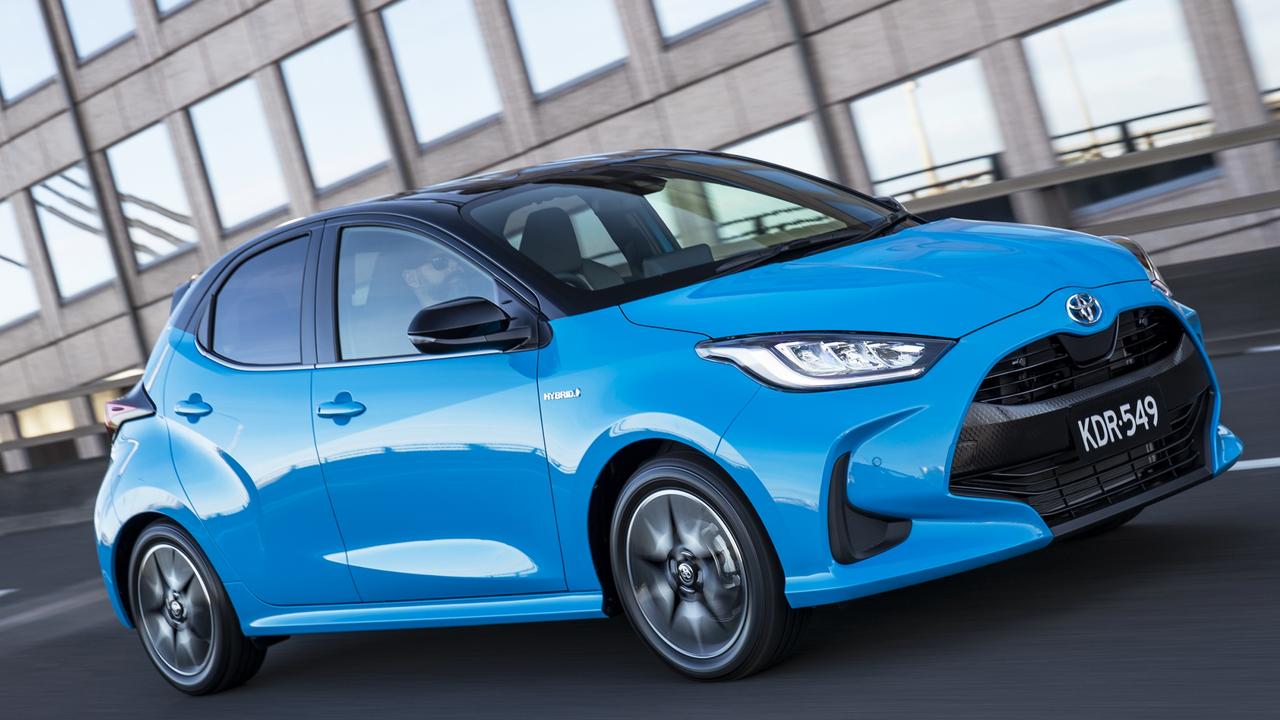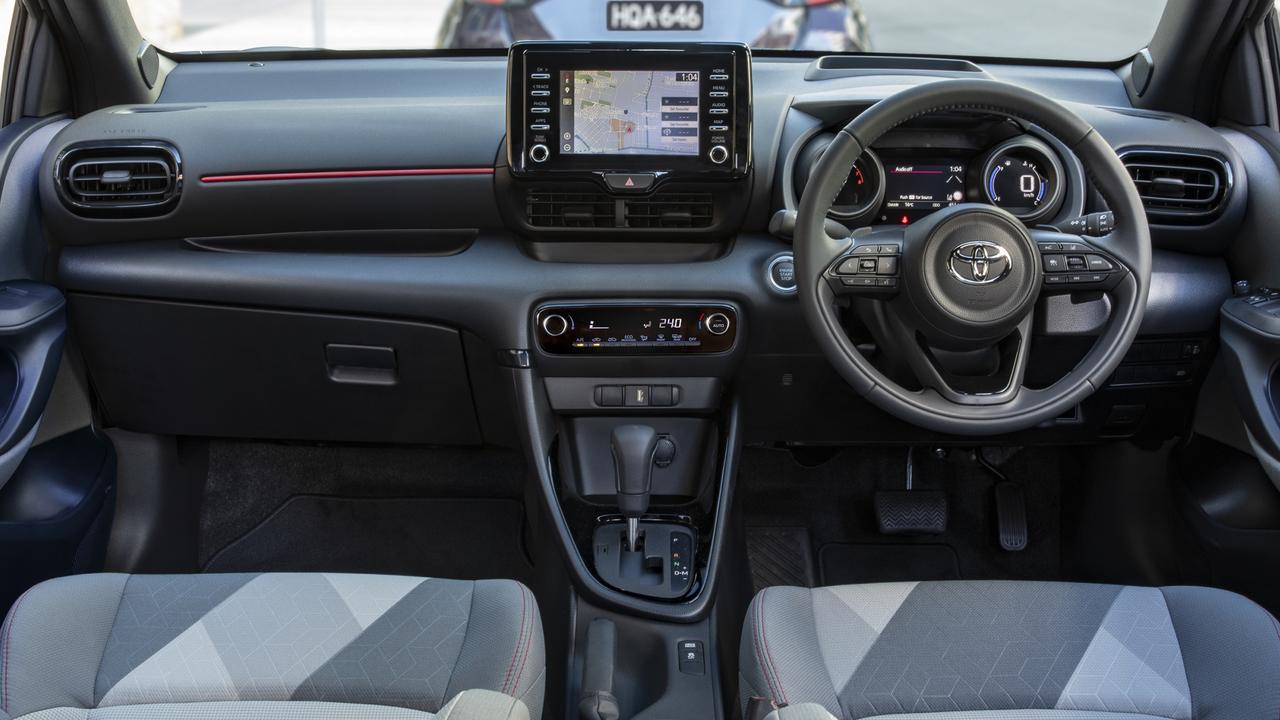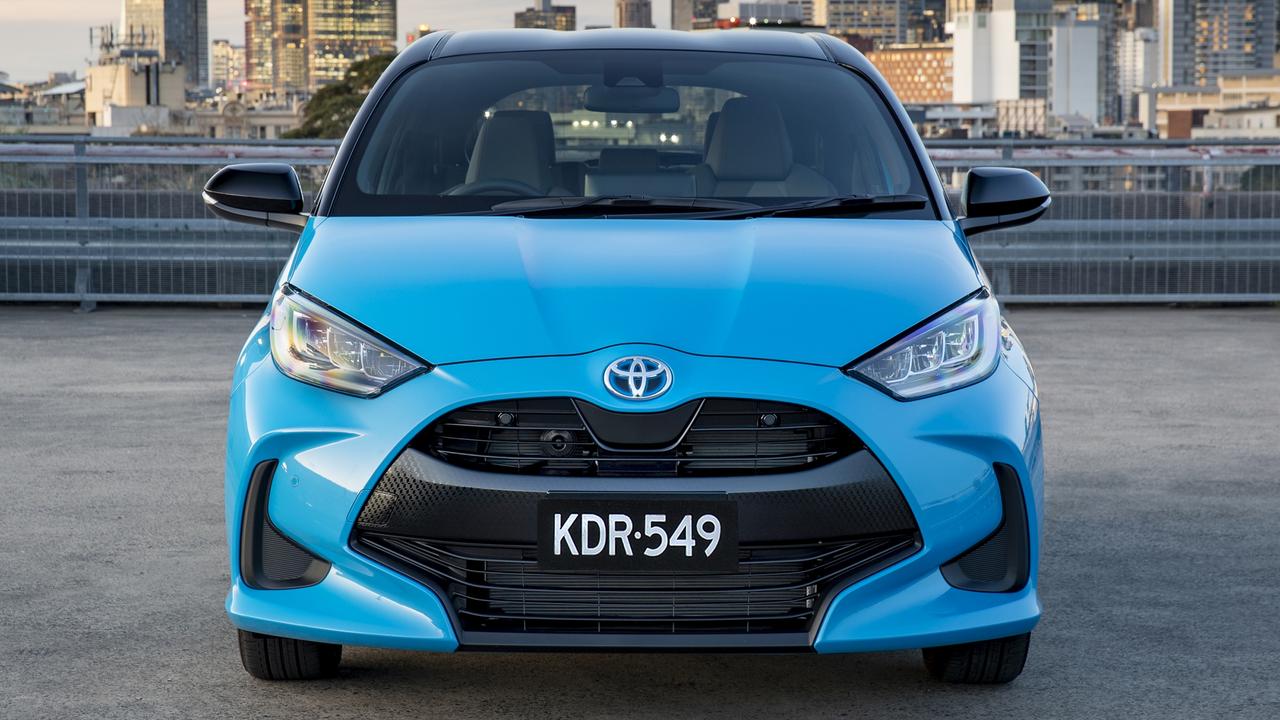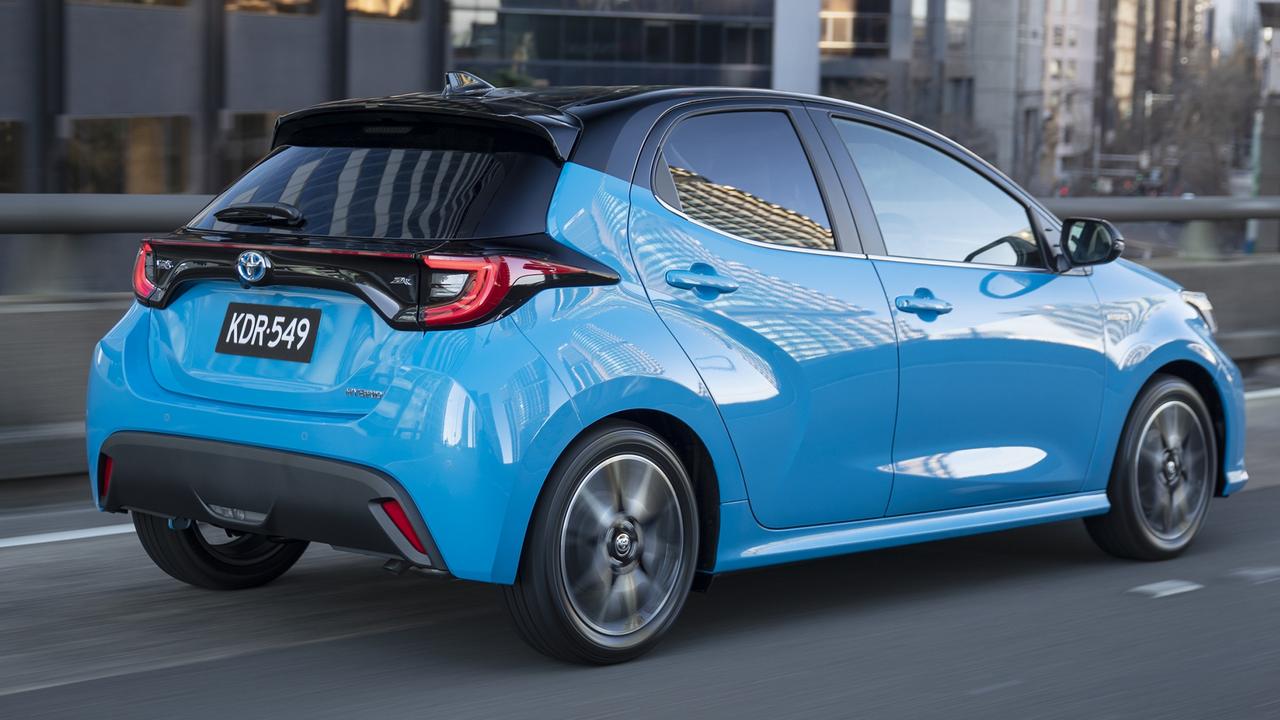Toyota Yaris ZR Hybrid impresses with its efficiency
Vehicle emissions are back on the agenda as the government considers a mandated CO2 target. But not everyone can afford to go electric.
Toyota’s Yaris hybrid isn’t a budget option for first-car buyers but it is a sensible choice for someone looking to reduce their carbon footprint without breaking the bank.
Here are five things to know about Toyota’s most efficient hatch.
If this was a popularity contest, it would lose
A decade ago, the Yaris was one of the most popular cars on the road and some pundits were predicting that Aussies would finally embrace small city hatchbacks in the way Europeans had for decades. Then the SUV tsunami hit and hatchbacks were suddenly forgotten by new-car buyers. Toyota did nothing to help the cause, introducing an SUV version of the little hatchback – called the Yaris Cross – and jacking up prices substantially. In 2019, you could pick up a manual Ascent for $15,300 plus on-roads. The following year the get-in price was $22,130 plus on-roads, about $25,500 drive-away. Our test car, the ZR Hybrid is about $37,300 drive-away.

It’s small, but it’s got it all
Toyota’s advertising tagline for the Yaris is “small now has it all” and that’s a pretty good explanation as to why it’s so expensive. It’s one of the safest small cars on the road, with most of the latest and greatest driver assistance technology standard across the range. The Yaris will keep you tracking in your lane, keep a safe distance to the car in front on the freeway and hit the brakes if it senses a potential collision. The ZR models also have blind-spot monitoring and rear cross-traffic alert to prevent you from backing out of a driveway into the path of passing traffic. Eight airbags include one between the driver and front passenger to stop them from banging heads in a side-impact accident.

The colour palette is adventurous
Toyota has a reputation for being a bit stuffy, but the Yaris comes in some funky colours, including a bright yellow-green, a pinkish grey, a retina-searing red and an electric blue. Four of the colours can be ordered with a contrasting piano black roof. Inside, the ZR’s cabin isn’t the usual 50 shades of grey. There’s a red stripe across the dash and on the doors, as well as two-tone heavily sculpted bucket seats. Complementing the youthful design are a big centre touchscreen, digital dials in front of the driver and a head-up display that projects vital information on the windscreen such as speed, prevailing speed limit and satnav directions.

It’s a relatively cheap way to shrink your carbon footprint
The ZR Hyrbid Yaris looks expensive compared with petrol rivals, but when you compare it with electric vehicles, it comes up looking pretty good. You pay a premium of roughly $2000 for the hybrid set-up, but you’ll recover that reasonably quickly with petrol prices about to spike again. Range anxiety won’t be a problem either – Toyota claims the Yaris can travel up to 1090km on a single tank. Official fuel consumption is 3.3L/100km and we easily achieved 3.5L/100km in bumper to bumper traffic. On a long highway run at 110km/h we saw 3.6L/100km. In an added bonus, it only needs regular unleaded petrol.

There’s fun to be had behind the wheel
Despite modest power and torque outputs of just 85kW and 141Nm, the Yaris feels lively enough off the mark and when darting into gaps in the traffic. It will get the job done on the freeway as well, although when it has to overtake or climb hills the little engine, which is matched to a continuously variable transmission, gets pretty vocal. Find a twisting road and the Yaris impresses, with precise steering, good body control and sharp reflexes. It can feel a little lumpy over sharp-edged bumps and corrugations, though.




